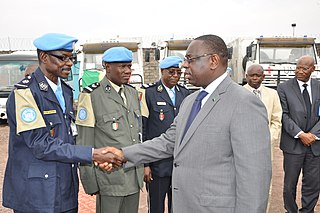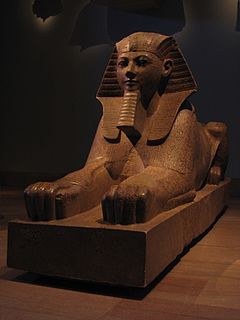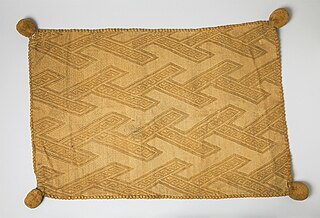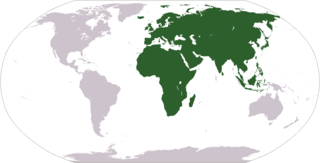 W
WThe culture in Africa is varied and manifold, consisting of a mixture of countries with various tribes that each have their own unique characteristic from the continent of Africa. It is a product of the diverse populations that today inhabit the continent of Africa and the African Diaspora. African culture is expressed in its arts and crafts, folklore and religion, clothing, cuisine, music and languages. Expressions of culture are abundant within Africa, with large amounts of cultural diversity being found not only across different countries but also within single countries. Even though African cultures are widely diverse, they are also, when closely studied, seen to have many similarities; for example, the morals they uphold, their love and respect for their culture as well as the strong respect they hold for the aged and the important, i.e. kings and chiefs.
 W
WAfrican divination is divination practiced by cultures of Africa.
 W
WAfrican dolls across the continent are created for young girls to play with and as a charm to ensure fertility in women. Their shape and costume vary according to region and custom. Frequently dolls are handed down from mother to daughter. Western dolls are popular in Africa and are often dressed with traditional garb.
 W
WAn afro is a natural growth of curly textured hair, in any length kinky hair texture, or specifically styled with chemical curling products by individuals with naturally curly or straight hair. The hairstyle can be created by combing the hair away from the scalp, dispersing a distinctive curl pattern, and forming the hair into a rounded shape, much like a cloud or puff ball.
 W
WLike other aspects of the culture of Africa, the architecture of Africa is exceptionally diverse. Throughout the history of Africa, Africans have developed their own local architectural traditions. In some cases, broader regional styles can be identified, such as the Sudano-Sahelian architecture of West Africa. A common theme in traditional African architecture is the use of fractal scaling: small parts of the structure tend to look similar to larger parts, such as a circular village made of circular houses.
 W
WAshanti to Zulu: African Traditions is a 1976 children's book written by Margaret Musgrove and illustrated by Leo and Diane Dillon. It was Musgrove's first book, but the Dillons were experienced artists and this book won them the second of their two consecutive Caldecott Medals.
 W
WZambian cuisine is heavily centered around nshima, which is a food prepared from pounded white maize. Nshima is part of nearly every Zambian meal. In addition to nshima, Zambian cuisine includes various types of stew, cooked vegetables and different types of beer. Dried fish and insects are also eaten.
 W
WAs expectations regarding good manners differ from person to person and vary according to each situation, no treatise on the rules of etiquette nor any list of faux pas can ever be complete. As the perception of behaviors and actions vary, intercultural competence is essential. However, a lack of knowledge about customs and expectations within African cultures can make even the best intentioned person seem rude, selfish, or worse.
 W
WAn honorary male or honorary man is a woman who is accorded the status of a man without disrupting the patriarchal status quo. Such a woman might be considered "one of the guys" by the men she associates with.
 W
WThe cosmogram is a symbol which is one of many manifestations of Kongo, or Bakongo, culture in the Americas. It is described and illustrated in detail in Flash of the Spirit: African and Afro-American Art and Philosophy by Robert Farris Thompson. It was a core symbol of the Kongo culture. An ideographic religious symbol, the cosmogram was called dikenga dia Kongo or tendwa kia nza-n' Kongo in the KiKongo language. Ethnohistorical sources and material culture demonstrate that the Kongo cosmogram existed as a long-standing symbolic tradition within the BaKongo culture before European contact in 1482, and that it continued in use in West Central Africa through the early twentieth century. In its fullest embellishment, this symbol served as an emblematic representation of the Kongo people and summarized a broad array of ideas and metaphoric messages that comprised their sense of identity within the cosmos.
 W
WIn the Kongo Kingdom and its vassals, the woven arts were emblematic of kingship and nobility. The coarse filament stripped from the fronds of the raffia palm tree served as the foundation of the Kongo weaving arts. This material imposed constraints that were overcome to produce varied and ingenious textile formats and structures. Raffia cloth was used as currency.
 W
WThe lip plate, also known as a lip plug or lip disc, is a form of body modification. Increasingly large discs are inserted into a pierced hole in either the upper or lower lip, or both, thereby stretching it. The term labret denotes all kinds of pierced-lip ornaments, including plates and plugs. It is most common in African native tribes.
 W
WManillas are a form of money, usually made of bronze or copper, which were used in West Africa. They were produced in large numbers in a wide range of designs, sizes, and weights. Originating before the colonial period, perhaps as the result of trade with the Portuguese Empire, Manillas continued to serve as money and decorative objects until the late 1940s and are still sometimes used as decoration. In popular culture, they are particularly associated with the Atlantic slave trade.
 W
WThe word negrophilia is derived from the French négrophilie that means love of the negro. It was a term that avant-garde artists used amongst themselves to describe their passion for black culture. During 1920–1930s Paris, negrophilia was a craze when to collect African art, to listen to jazz, and to dance the Charleston, the Lindy Hop or the Black Bottom, were signs of being modern and fashionable. Sources of inspiration were inanimate African art objects that found their way into Paris as a result of colonial looting of Africa as well as live performances by African-Americans, many of whom were ex-soldiers remaining in European cities after World War I, who turned to entertainment for a source of income. Perhaps the most popular revue and entertainer during this time was La Revue Nègre (1925) starring Josephine Baker.
 W
WThe term "Old World" is used commonly in the West to refer to Africa, Asia and Europe, regarded collectively as the part of the world known to its population before contact with the "New World".
 W
WThe term Pan-African colours may refer to two sets of three colours. Red, yellow, and green are inspired by the flag of Ethiopia. They are used in flags and other emblems of various countries and territories in Africa and the Americas to represent Pan-Africanist ideology. The Rastafarian movement and many Pan-African organisations also often use the colours.
 W
WA safari is an overland journey, usually a trip by tourists in Africa. In the past, the trip was often a big-game hunt, but today, safaris are often to observe and photograph wildlife—or hiking and sightseeing, as well.
 W
WWest Africa Time, or WAT, is a time zone used in west-central Africa. West Africa Time is one hour ahead of Coordinated Universal Time (UTC+01:00), which makes it the same as Central European Time (CET) during winter, or Western European Summer Time (WEST) and British Summer Time (BST) during the summer.